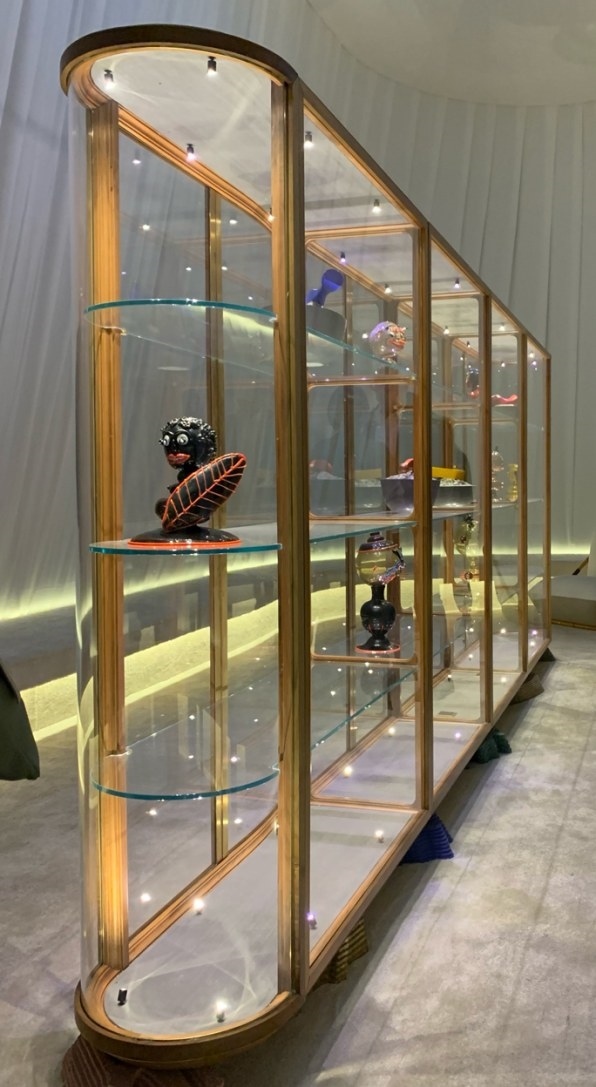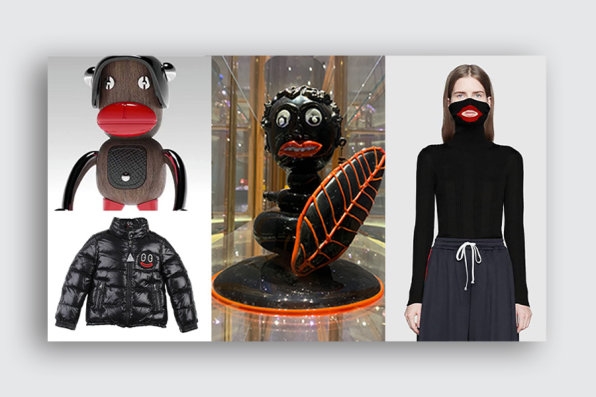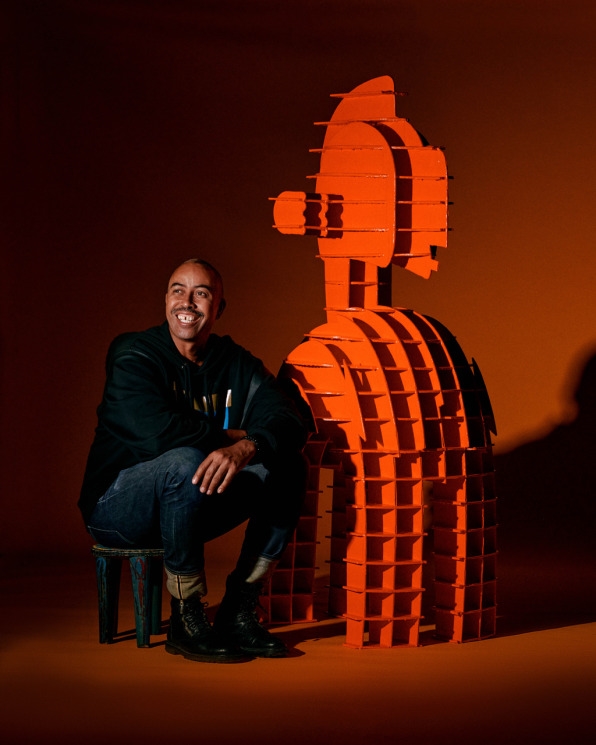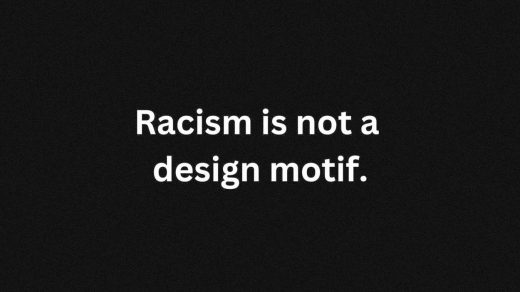Racism is not a design motif
By Stephen Burks
A couple of weeks ago, I traveled to the Milan Furniture Fair to celebrate design excellence with my peers in the contemporary design industry. But my attention was gripped by the controversy of a racist exhibition called The Collector, by Italian architect Massimo Adario.
Within the group show Campo Base, curated by Federica Sala, The Collector displayed a compilation of glass figurines produced in the 1920s, which are part of Adario’s own personal collection. Intended to be “ironic,” these decorative objects depicted non-European peoples in grotesque, racially charged caricatures.

Shocked, Anna Carnick of Anava Projects, Jenny Nguyen of Hello Human PR, and I returned home to the U.S. and released a joint statement on Instagram, alerting the design community to the harmful message The Collection exhibition was spreading. The design press, which had previously labeled the show a “must-see,” rescinded their praises. Designers from across the industry demanded an apology, which Adario and Sala finally gave.
Now, two weeks later, I am writing this trying to make sense of what just happened. I arrived to the salone in Milan believing that progress in the design industry had been made, but I was reminded how quickly the pendulum swings from the “democratic” left, where “all men” are supposedly created equal, to the far right, where fascism and racism seem to exist and thrive undeterred.
Design is cultural production tied to capital and influence—no different from art, music, literature, fashion, architecture, or film. And culture, when it operates within a system of white supremacy, can either challenge or reinforce this system. The attention our statement garnered in the furniture fair’s aftermath has been so overwhelming that it has consumed all of the studio’s energy.
The reaction, like the solution, is somehow a double-edged sword: We’re forced to identify the problem, imagine the solution, and act on both at the same time, while also educating those who don’t acknowledge the problem in the first place. The unique paradox I feel is summarized by the writer Jenna Wortham in their book Black Futures: “We [as Black creatives] have never been so empowered, and yet so disenfranchised.”
This scenario has surfaced questions that have plagued the design community throughout its history: Is it the responsibility of the oppressed to explain to their oppressor how they are being oppressed? Are we really empowered when that empowerment comes at the disenfranchising of others? When will we reach a state of normalcy and be seen first and foremost for the quality of the work we put out into the world, and not for our identity—or, in the case of Milan, the controversy around it?

This is not the first time racist design motifs have reared their ugly head in contemporary popular culture. In 2018, Prada was called out for releasing a line of blackface trinkets. In 2019, Gucci caused an uproar after producing a black balaclava-like sweater whose face-high neck featured a cutout mouth with grotesquely large red lips. And in 2020, the blackface motif appeared on Moncler jackets and bags.
In each of these examples, and at Campo Base, those responsible claimed ignorance while promoting their designs to millions on international platforms. How many more times will people in positions of power and influence benefit from dehumanizing “the other” while simultaneously denying the majority of the world the right to participate on equal terms?
In 2023, it’s no longer enough to affirm that structural racism exists—we must make clear that it exists to the detriment of society as a whole. As active participants in a global design community, we all have a part to play in making the community more inclusive, tolerant, and welcoming to everyone. This must begin with more diversity in the places and spaces where it has barely a toehold—the corporate boardroom, the C-suite, the classroom, the design studio, and yes, the global fair.
Look at the number of BIPOC-owned businesses participating at the fair, and a clearer picture of design’s Eurocentricity emerges. When furniture maker and data scientist Jomo Tariku counted the number of branded contemporary design collections in 2019 to 2020, he found that of 4,417 collections, only 14 were made by Black designers. And of these 14 collections, 3 were by my studio, Stephen Burks Man Made. Since Tariku’s study, people have asked him to update his numbers, but his response (and mine) is: We don’t want to keep doing the work of explaining these injustices. Listen to my conversation with Dennis Scully on the Business of Home podcast if you want to educate yourself.
I am the first and only African American designer to receive the Cooper Hewitt National Design Award for product design, and the first person of color to work with most of my clients—but I don’t want to be the exception to the rule. My exceptionalism is nothing to applaud in a world where many more are not offered the same opportunities. Opening the door to one person of color is not progress. Together, we need to break down the door and rebuild the entire house, while at the same time rejecting the fixed hierarchy of people based on historical castes. Ultimately, we all have to wake up and realize that diversity only benefits us all.
At Stephen Burks Man Made, we believe that everyone is capable of design, and that everyone should have equal access to the transformative potential of design, regardless of their level of access or education. Building upon the creative survival tactics of marginalized diasporas throughout the world, we echo the words of Lesley Lokko: “Imagination is not a luxury, it is first and foremost a tool for liberation. If you cannot imagine a better world, you will never make it.”

In this age of converging global crises, it’s time to ask how design can move beyond the narrow confines of luxury and begin to add real value to people’s lives. How do we honor our ancestors? How do we invite spirituality into the home? How do we “live together in a world of strangers” as the philosopher Kwame Anthony Appiah wrote in his book Cosmopolitanism: Ethics in a World of Strangers. These are all design challenges and some of the themes we explore in Shelter in Place, our latest publication and solo exhibition, which travels to the Philadelphia Museum of Art this fall.
If we look beyond petty attempts to divide us and imagine new structures for uniting us, what could next year’s Milan Furniture Fair look like? We would like to see a fair that honors the sovereignty of individual design perspectives while respecting our collective potential for belonging. We would like to see a fair without threats of exclusion and nationalism. We would like to see a fair defined at its core as a space for freedom of expression toward the true creative liberation of all peoples. That work begins now, with all of us.
(10)



